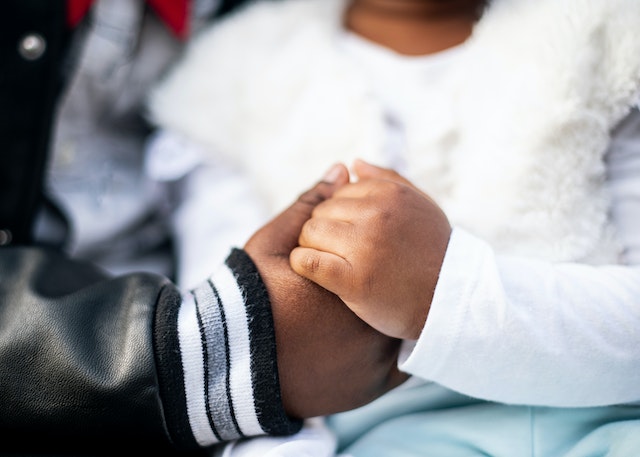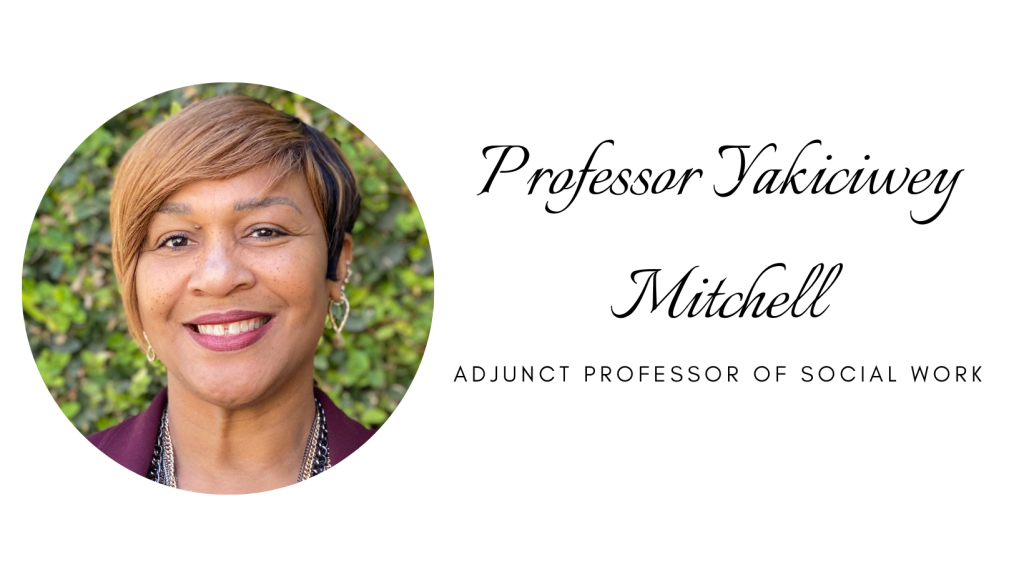So Many Interventions, Not Enough Progress: Addressing the Overrepresentation of African Americans in the Child Welfare System
Disproportionality describes the over or under-representation of specific groups in systems relative to their representation in the general population. Overrepresentation is a form of disproportionality that has existed for African American children and families since the 1960s (Hanna, 2021). Early in the 1960s, African Americans proportionality in the CWS shifted from ‘under’ to ‘over’ when a federal policy requiring states to provide services to children at risk of abuse or neglect was implemented. According to the Child Welfare Information Gateway (2022), African American children and families are overrepresented at every decision point along the child protective services (CPS) and Child Welfare Services (CWS) continuum (Knott & Giwa, 2012, p 220). Scholars have differing views regarding the causes of overrepresentation. Many scholars believe systemic and institutional racism are the fundamental causes of the disproportionate representation of African Americans in the CWS (Dettlaff, 2021; Maguire-Jack et al., 2021; Krase, 2013).
Despite decades of advocacy to eliminate the problem of African American overrepresentation, the problem is still the reality in the CWS. African American children represent nearly 14% of the USA’s general child population and 23% of the USA child welfare population (Annie E Casey Foundation, 2021). One way to understand why overrepresentation persists is to study the impact of strategies to reduce disproportionality. What is known about efforts, strategies, and interventions to eliminate African American overrepresentation in child welfare?
Before 1960, states had the discretion to determine eligibility for poor people to receive Aid to Dependent Children (ADC) income support. Many states opted to deny aid to poor black families due to “unsuitability,” which was determined by the judgment of state workers (Hanna, 2021; Williams-Butler et al., 2020). Scholars have identified the “Flemming rule” enactment in 1961 as the point when African American families moved from underrepresented to overrepresented. Williams-Butler et al. (2020) notes that the policy “attempted to administratively correct the discriminatory practice of excluding families who were poor from accessing ADC benefits under the guise of home suitability clauses (p 80). The Flemming Rule dictated that if states failed to provide services after determining a child was in danger of maltreatment, they would not be eligible for federal reimbursement for funds to support children (Williams-Butler et al., 2020). In 1972, Giovanonni and Billingsley’s research identified disproportionality and disparities for black families in child welfare (Giovanonni & Billlingsley, 1972).

Interventions to counteract disproportionality are readily introduced, but there is little evidence of sustained change in the child welfare system (Dettlaff et al., 2020, p 505). “1 in 5 black children…are documented as victims of maltreatment before age 18, compared to 1 in 10 white children…(Wildeman et al., 2014; Maloney et al., 2017).” Many of the efforts to reduce the number of children in the CWS do not focus on race. Most family empowerment approaches do not address the bias based on race. We live in a racialized nation where racial and ethnic minorities have higher rates of poverty, higher rates of criminal system involvement, and higher rates of CWS involvement. Here are some questions to consider when grappling with whether we believe that African American disproportionality in child welfare is due to racism:
- Do we believe that African Americans make more choices that cause them to be impoverished than other races?
- Do we believe that African Americans are more inclined to criminality than other races?
- Do we believe that African Americans mistreat their children more than other races?
If we answer ‘yes’ to these questions, we attribute these interrelated social problems to the choices and inclination of Black people. This means we blame Black people for the social problems without considering the impact of centuries of racism on their present socioeconomic conditions.
African Americans living in poverty are “over-surveilled” by helping systems. Dettlaff et al. (2020) contend that over- surveillance leads to “over-reporting” child maltreatment (p 507). When maltreatment allegations are substantiated and children are removed, parents must meet agency and court requirements to reunify with their children. This process involves required meetings, court dates, and appointments that are often difficult to keep, putting parents at risk of ‘non-compliance,’ which threatens reunification efforts. These conditions disempower families who are already vulnerable.
Scholars contend that some Federal legislation intended to improve conditions for children in the CWS, had an adverse effect on African American children and families (Fitzgerald & Gonzales, 2022; White, 2006). The Child Abuse Prevention Act (CAPTA) of 1974 established mandated reporting requirements, thereby empowering educational, medical, and social service professionals to report suspected child maltreatment (Burton & Montauban, 2021; A. J. Dettlaff et al., 2020). Iguanta & Sciolia (2022) advocate ending mandated reporting of child maltreatment due to its disproportionate impact on African American children and families who are overrepresented in substantiated reports of abuse and neglect.
I recently extracted data from 43 publications which described 18 types of efforts to address African American overrepresentation in the child welfare system. There is no shortage of efforts, however, the problem persists. Why have efforts not resulted in sustained change? The persistent overrepresentation of African Americans in the CWS amid the underrepresentation of white children is too significant for comfort. Amid the literature on this social problem, there is ongoing debate about the reasons for African American overrepresentation. Dettlaff & Boyd (2020) argue that the debate hinders efforts to eliminate the problem because scholars do not agree on the most effective ways to intervene. Hence, though there are many interventions, there is not enough progress.

References
Burton, A. O., & Montauban, A. (2021). TOWARD COMMUNITY CONTROL OF CHILD WELFARE FUNDING: REPEAL THE CHILD ABUSE PREVENTION AND TREATMENT ACT AND DELINK CHILD PROTECTION FROM FAMILY WELL-BEING. In COLUMBIA JOURNAL OF RACE AND LAW (Vol. 11, Issue 3). https://ssrn.com/abstract=3905041
Child Welfare Information Gateway. (2022). Child Welfare Practice to Address Racial Disproportionality and Disparity. https://www.childwelfare.gov
Dettlaff, A. (Editor). (2021). Child Maltreatment: Contemporary Issues in Research and Policy 11 Racial Disproportionality and Disparities in the Child Welfare System. http://www.springer.com/series/8863
Dettlaff, A. J., & Boyd, R. (2020). Racial Disproportionality and Disparities in the Child Welfare System: Why Do They Exist, and What Can Be Done to Address Them? Annals of the American Academy of Political and Social Science, 692(1), 253–274. https://doi.org/10.1177/0002716220980329
Dettlaff, A. J., Weber, K., Pendleton, M., Boyd, R., Bettencourt, B., & Burton, L. (2020). It is not a broken system, it is a system that needs to be broken: the upEND movement to abolish the child welfare system. Journal of Public Child Welfare, 14(5), 500–517. https://doi.org/10.1080/15548732.2020.1814542
Fitzgerald, M., & Gonzales, K. (2022). Advocates and Officials Press Case for Overhauling Key Adoption and Child Welfare Law.
Giovanonni, J., & Billlingsley, A. (1972). Children of the Storm Black Children and White Child Welfare. 1–246.
Hanna, M. D. (2021). Child Welfare System Issues as Explanatory Factors for Racial Disproportionality and Disparities. In A. Dettlaff (Ed.), Racial Disproportionality and Disparities in the Child Welfare System (11th ed., pp. 177–197). Child Maltrreatment. https://doi.org/10.1007/978-3-030-54314-3_10
Iguanta, G., & Sciolia, C. (2022). Time Doesn’t Heal All Wounds_ A Call to End Mandated Reporting Laws. Columbia Social Work Review, XIX, 116–137.
Knott, T., & Giwa, S. (2012). African American disproportionality within CPS and disparate access to support services: Review and critical analysis of the literature. In Residential Treatment for Children and Youth (Vol. 29, Issue 3, pp. 219–230). https://doi.org/10.1080/0886571X.2012.697434
Krase, K. S. (2013). Differences in Racially Disproportionate Reporting of Child Maltreatment Across Report Sources. Journal of Public Child Welfare, 7(4), 351–369. https://doi.org/10.1080/15548732.2013.798763
Maguire-Jack, K., Korbin, J. E., Perzynski, A., Coulton, C., Font, S. A., & Spilsbury, J. C. (2021). How Place Matters in Child Maltreatment Disparities: Geographical Context as an Explanatory Factor for Racial Disproportionality and Disparities (pp. 199–212). https://doi.org/10.1007/978-3-030-54314-3_11
Maloney, T., Jiang, N., Putnam-Hornstein, E., Dalton, E., & Vaithianathan, R. (2017). Black–White Differences in Child Maltreatment Reports and Foster Care Placements: A Statistical Decomposition Using Linked Administrative Data. Maternal and Child Health Journal, 21(3), 414–420. https://doi.org/10.1007/s10995-016-2242-3
Puzzanchera, C., Smith, J., Taylor, M., & Kang, W. (2022). Disproportionality Rates for Children of Color in Foster Care Dashboard. National Council of Juvenile and Family Court Judges.
White, C. (2006). Federally Mandated Destruction of the Black Family: The Adoption and Safe Families Act.
Wildeman, C., Emanuel, N., Leventhal, J. M., Putnam-Hornstein, E., Waldfogel, J., & Lee, H. (2014). The prevalence of confirmed maltreatment among US children, 2004 to 2011. JAMA Pediatrics, 168(8), 706–713. https://doi.org/10.1001/jamapediatrics.2014.410
Williams-Butler, A., Golden, K. E., Mendez, A., & Stevens, B. (2020). Intersectionality and Child Welfare Policy. Source: Child Welfare, 98(4), 75–96. https://doi.org/10.2307/48623697
2 Comments
Very pertinent research and subject matter. Much needed perspectives and introspection as well.
Hozell, thank you for taking the time to read and share your thoughts!